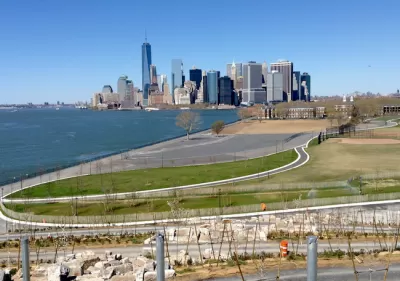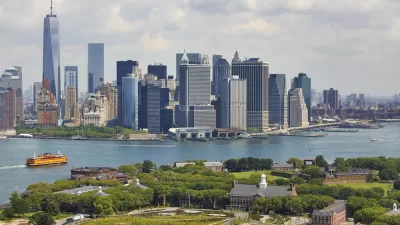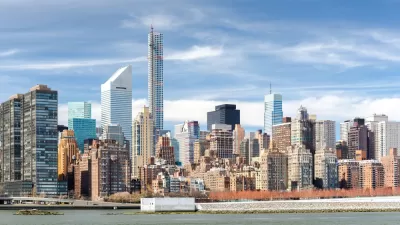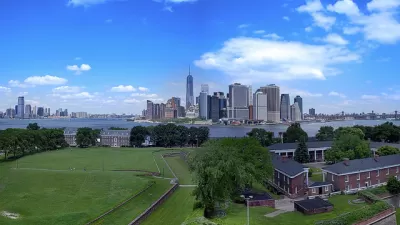Citing several recent projects, Alan G. Brake argues that New York City is developing an urban identity that no longer transmits every experience through the lens of Manhattan.

As Manhattan becomes, more than ever, a center for global capital, the rest of New York City is primed to develop along alternative paths. Alan G. Brake says this is a good thing, and centers his observations on one particular project. "The Hills on Governors Island, designed by the Dutch landscape architects West 8, have turned a previously pancake-flat stretch of land into a transformative platform for perceiving New York in a new way: a city that is rapidly evolving beyond a Manhattan-centric identity."
Visitors to The Hills enjoy panoramas of the city that cannot be had so freely in Manhattan itself. "Views like this are rarely available to average New Yorkers, and tourists are charged large sums for jaw-dropping views from the city's viewing platforms at One World Trade Center, the Empire State Building, and Top of the Rock at Rockefeller Center."
Brake makes the claim that "Mayor Bill de Blasio has not shown himself to be particularly interested or well-versed in planning and design, but he has slowly revealed a new understanding of the city as a regional entity connected by water."
To that end, the piece discusses de Blasio's Brooklyn Queens Connector (BQX) and five-borough ferry project as examples of the trend. "Both the BQX and the ferry expansion project give people more transportation choices, and acknowledge that the Manhattan-centric subway system is not enough to serve contemporary patterns of living and working, where many New Yorkers travel from one outer borough to another without ever coming into Manhattan."
FULL STORY: New York Is Rapidly Evolving Beyond a Manhattan-Centric Identity

Planetizen Federal Action Tracker
A weekly monitor of how Trump’s orders and actions are impacting planners and planning in America.

Maui's Vacation Rental Debate Turns Ugly
Verbal attacks, misinformation campaigns and fistfights plague a high-stakes debate to convert thousands of vacation rentals into long-term housing.

Restaurant Patios Were a Pandemic Win — Why Were They so Hard to Keep?
Social distancing requirements and changes in travel patterns prompted cities to pilot new uses for street and sidewalk space. Then it got complicated.

In California Battle of Housing vs. Environment, Housing Just Won
A new state law significantly limits the power of CEQA, an environmental review law that served as a powerful tool for blocking new development.

Boulder Eliminates Parking Minimums Citywide
Officials estimate the cost of building a single underground parking space at up to $100,000.

Orange County, Florida Adopts Largest US “Sprawl Repair” Code
The ‘Orange Code’ seeks to rectify decades of sprawl-inducing, car-oriented development.
Urban Design for Planners 1: Software Tools
This six-course series explores essential urban design concepts using open source software and equips planners with the tools they need to participate fully in the urban design process.
Planning for Universal Design
Learn the tools for implementing Universal Design in planning regulations.
Heyer Gruel & Associates PA
JM Goldson LLC
Custer County Colorado
City of Camden Redevelopment Agency
City of Astoria
Transportation Research & Education Center (TREC) at Portland State University
Jefferson Parish Government
Camden Redevelopment Agency
City of Claremont





























